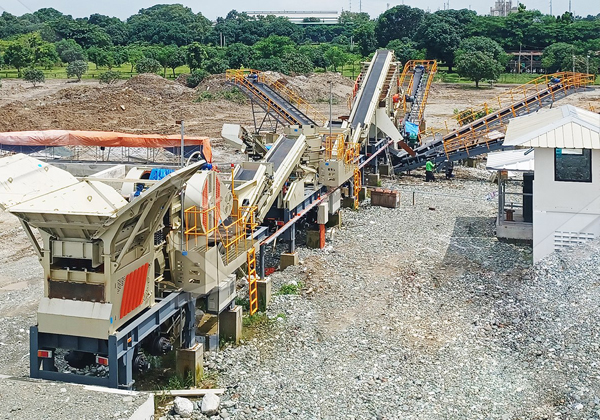Designing an optimally configured mobile crushing plant requires careful consideration of various factors, including production requirements, site conditions, material characteristics, and operational efficiency. By integrating these elements efficiently, you can create a mobile crushing plant that maximizes productivity while minimizing operational costs and environmental impact.

- Raw Material Characteristics:
- Identify the type, size, and hardness of the material to be crushed. Different materials require different crushing equipment.
- Consider the moisture content as it affects the crushing process and equipment selection.
- Analyze the gradation and shape requirements of the final product.
- Production Requirements:
- Determine the required production capacity per hour or day.
- Evaluate the desired product sizes and specifications.
- Consider the variability in production demand and plan for flexibility in the plant’s configuration.
- Equipment Selection:
- Choose primary crushing equipment based on the raw material characteristics and production requirements. Options may include jaw crushers, gyratory crushers, or impact crushers.
- Select secondary and tertiary crushers to achieve the desired product shape and size distribution.
- Include screening equipment to separate the crushed material into different sizes efficiently.
- Integrate conveying systems to transport material between crushing stages and to stockpile the final products.
- Power and Fuel Efficiency:
- Opt for energy-efficient equipment to minimize operational costs.
- Consider using diesel-electric hybrid systems or electric-powered crushers to reduce fuel consumption and emissions.
- Implement technologies such as regenerative braking and idle shutdown to enhance fuel efficiency.
- Mobility and Transportability:
- Choose a mobile crushing plant with a compact design and easy setup for quick deployment to different job sites.
- Ensure compatibility with standard transportation regulations for hassle-free movement between locations.
- Incorporate features like tracks or wheels for maneuverability on uneven terrain.
- Automation and Control Systems:
- Implement advanced automation systems for efficient operation and monitoring.
- Utilize remote monitoring and diagnostics to track equipment performance and identify maintenance needs.
- Integrate safety features and emergency shutdown systems to protect personnel and equipment.
- Maintenance and Serviceability:
- Prioritize accessibility for maintenance tasks to minimize downtime.
- Select equipment from reputable manufacturers with reliable service and support networks.
- Train operators and maintenance personnel for proper equipment operation and upkeep.
- Future Expansion and Upgrades:
- Design the plant with scalability in mind to accommodate future production growth.
- Allow for easy integration of additional equipment or modifications to meet changing requirements.
- Stay updated on advancements in crushing technology and consider future upgrades to enhance efficiency and productivity.
By considering these factors and designing a mobile crushing plant tailored to specific needs, operators can achieve optimal performance, efficiency, and versatility in their crushing operations.
